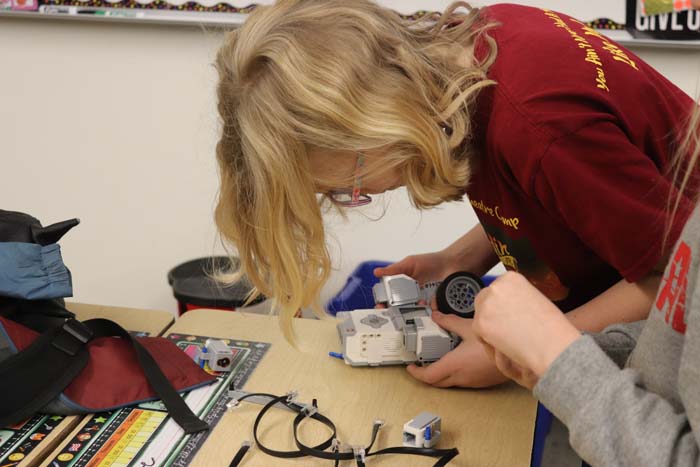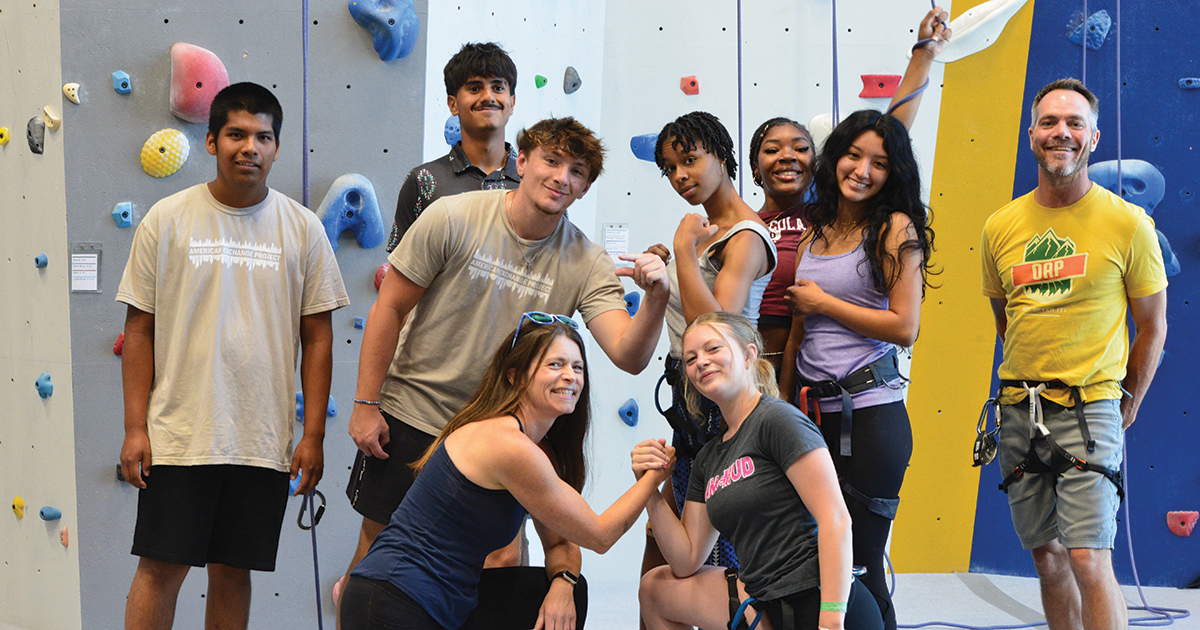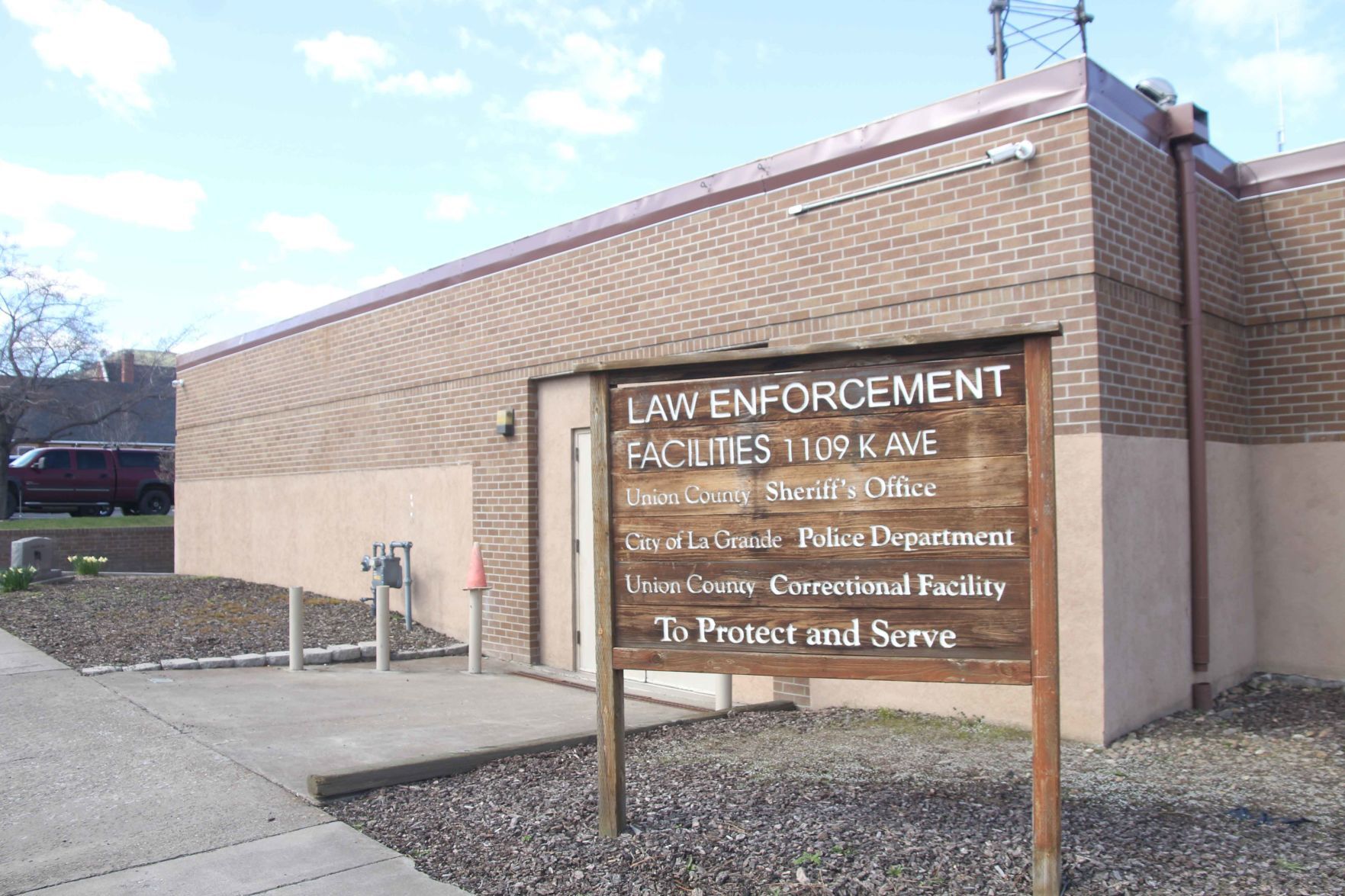Robotics brick by brick
Published 9:30 am Friday, November 15, 2019

- Fifth grader Fern McConnell works on building her robot during the club's after school meeting.
Fifth-grader Fern McConnell adjusted the Lego pieces that would hold wheels onto a tiny computer. She fiddled with the construction of the bricks, working on the build and model of her team’s robot. The team’s aim: to create a robot that will win.
Trending
At Central Elementary School in La Grande, the Lego Robotics Club, made up of fourth- and fifth-graders, is one of many teams in the area getting ready to compete in a Dec. 4 tournament at Eastern Oregon University.
“I joined because I thought it would be fun and I would get a chance to learn how to make robots and code,” fourth-grader Jonathan Gisi said.
Fourth-grade teacher Leslie Graham oversees the club, which meets twice a week to build and program robots that will complete various tasks as part of a competition. The students work in teams to build a robot from a computer unit called an EV 3 and create their devices from there using Legos.
Trending
The statewide program is the creation of the Oregon Robotics Tournament Outreach Program with levels of competition from kindergarten through 12th grade. Central focuses on the First Lego League, for fourth to eighth grades. Schools in Elgin, Imbler, Hermiston and Ontario are among those in the area that have teams.
Seven years ago Graham started an after-school engineering program at Central, and from there she learned about the robotic tournament. Contributions from Grande Ronde Children’s Center, La Grande School District and Wildhorse Foundation helped pay for the club’s registration fees and materials.
“I love science. I wasn’t able to get any science classes when I was growing up until I got into high school,” Graham said, explaining that she started the club with the goal of getting students interested in science at an early age.
ORTOP has a different theme every year for its annual competition. This year’s theme is “City Shapers,” so students will create a robot that can go down various paths to complete tasks that might occur when building in a city, such as stacking blocks on top of each other, pushing levers and hanging rings. The theme also asked for teams to look within their own city for issues they can solve using robotics and technology and then to present their ideas to an outside source.
“They need to show proficiency in robotics. They get points for how many tasks their robot completes,” Graham said about the competition.
The team from Central found a problem with accessibility within La Grande, particularly on Second Street from H Street to Washington Avenue, and gathered data about the lack of curb cuts on the street. According to their findings, 84% of the curbs on that stretch of Second Street have no curb cuts, making it difficult for those with mobility issues to move between the curb and the street.
“Our ideas were focused on solving the issue of no curb cuts,” fifth-grader Lucille Morris said.
The students presented their project to the La Grande City Council during its November meeting. Gisi told the council a scissor lift could bring people from street to curb and vice versa. And McConnell suggested a ramp that could come out when people need it and retract when cars pass.
With the project
completed, the team changed focus to preparing for the competition. Once the students finish constructing their robots, they will program them to complete tasks using coding software.
The Lego league provides teams with materials for the competition, including blueprints for models of robots. However, students are allowed to create their own models using the materials as long as they follow certain parameters in height and width.
Graham saw the program as a way to get students interested and involved in engineering at a young age, which she said is important to helping them develop.
“First, it teaches problem solving,” Graham said. “It shows them how to collaborate with others, be part of a team, that it is okay to piggyback off of other people’s ideas, and (it teaches them) resilience and persistence.”









